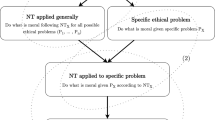Abstract
A reasoned argument or tarka is essential for a wholesome vāda that aims at establishing the truth. A strong tarka constitutes of a number of elements including an anumāna based on a valid hetu. Several scholars, such as Dharmakīrti, Vasubandhu and Dignāga, have worked on theories for the establishment of a valid hetu to distinguish it from an invalid one. This paper aims to interpret Dignāga’s hetu-cakra, called the wheel of grounds, from a modern philosophical perspective by deconstructing it into a simple probabilistic mathematical model. The objective is to understand how and why a vāda based on a probabilistically weaker hetu can degrade into a Jalpa or vitaṇḍā. To do so, the paper maps the concept of ‘Bounded Rationality’ onto the hetu-cakra. Bounded Rationality, an idea coined by the management thinker Herbert Simon, is often employed in understanding decision-making processes of rational agents. In the context of this paper, the concept would state that the prativādin and ālocaka (debater) may not hold unbounded information to back their pratijñā (proposition). The paper argues that within the probabilistically deconstructed hetu-cakra model, most people argue in the ‘Zone of Bounded Rationality’, and thus, the probability of a debate degrading into Jalpa or vitaṇḍā is high.
Similar content being viewed by others
References
Bubelis, V. (1979). On equilibria in finite games. International Journal of Game Theory, 8(2), 65–79. https://doi.org/10.1007/bf01768703.
Dasti, M., & Phillips, S. (2017). The Nyaya-sutra: Selections with Early Commentaries. Indianapolis: Hackett Publishing Company.
Emmanuel, S. M. (Ed.). (2013). A companion to Buddhist philosophy. Hoboken: Wiley.
Katsura, S. (1986). On Trairūpya Formulae. Buddhism and its relation to other religions: Essays in honour of Dr. Shozen Kumoi on his seventieth birthday (pp. 161–172). Kyoto: Heirakuji Shoten.
Author information
Authors and Affiliations
Corresponding author
Additional information
Publisher's Note
Springer Nature remains neutral with regard to jurisdictional claims in published maps and institutional affiliations.
Rights and permissions
About this article
Cite this article
Jha, A.K. A Mathematical Model of Dignāga’s Hetu-cakra. J. Indian Counc. Philos. Res. 37, 471–479 (2020). https://doi.org/10.1007/s40961-020-00217-3
Received:
Revised:
Accepted:
Published:
Issue Date:
DOI: https://doi.org/10.1007/s40961-020-00217-3



